Although Women’s Day is celebrated on 8 March worldwide, in South Africa we celebrate Women’s Day on August 9. August is also commemorated as Women’s Month, in recognition of the march staged on 9 August 1956.
Over 20,000 women of all races marched to the Union Building in Pretoria to hand over a petition to the then Prime Minister, protesting against the Pass Laws. Passes were a form of Internal passport that South Africans classified as ‘Blacks’ under the Population Legislative Act in 1952, had to carry when outside Designated Areas. Besides this, Indians, Coloureds (people of ‘mixed’ Black and White races), Arabs, and Chinese were also discriminated against. For example, Indians were barred from the Province of Orange Free State (one of the nine provinces, of South Africa before 1991). The women outside the Union Building were silent for 30 minutes, then sang a song, which translated means, “You strike a woman, you strike a rock.”
National Women’s Day serves to highlight the issues that South African women faced, for example, unequal pay and schooling for girls, sexual harassment in the workplace and domestic violence.
There are many Inspirational stories about women from diverse backgrounds but I will focus on the achievements of a few Women of Thamizh Descent and the impact of their struggles on the South African Society.

Doctor Kesaveloo Goonarithnum Naidoo (Dr. Goonam), born in 1906 in Durban was the First Indian female doctor in South Africa.
She first went to Sathia Gnana Sabbai Tamil School before transferring to an English School. At that time no medical schools were admitting non-White females so she went on to study medicine in Edinburgh (coincidentally on 8th March 1928). She later set up a medical practice in Grey Street, Durban, treating Black and Asian women and was referred to as “The Coolie doctor” a derogatory term for Indian workers.

She became an active member of the NIC (Natal Indian Congress) and hosted many Human Rights community meetings. In 1946, she was jailed for four months for the leadership in the Passive Resistance Campaign that she hoped would highlight the injustices faced by the non-White population. She was credited as saying that Indian women have to fight for everything in their lives and that our lot is not just to stay at home and cook. She was jailed about seventeen times and eventually left South Africa. When Nelson Mandela was released from prison, together with other members she recommended the NIC to disband and to unite with African National Congress and was recognised as the new democratic government.

A bust of Kaisevelloo Goonarathnam Naidoo was unveiled recently at Mt. Edgecombe, under the auspices of Shri Mariammen Temple Society, Mount Edgecombe Hindu Temples Trust and the Mount Edgecombe Arts and Culture Council.
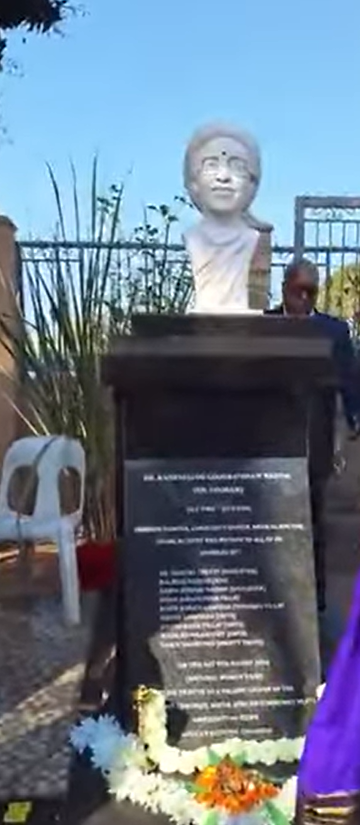
Thillaadi Valliammai, born on 22nd February 1898, was the daughter of immigrants, Munusammy and Mangalam Mudaliar. They were part of the early Thamizh Diaspora. Valliammai and her mother joined in a March Protesting against laws that recognised Christian Marriages and made marriages performed according to other rites null and void. As a result of this Law, women lost their right over their husband’s property and children were classified as being born out of wedlock. If one of these women was pregnant, she could be abused, jailed or expelled from the country. The only way out of this situation was to submit to a marriage in church.
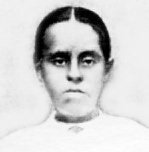
Valliammai a teenager with her mum was arrested while marching from Transvaal to Natal. The march was Illegal as certain people needed Passes to go from one province to another. It was here that she started the idea of non-violent resistance and began the hunger fast. She was sentenced to three months of hard labour in the Pietermaritzburg Prison. She became ill and refused to accept early release from prison. She died on 22nd February 1914. She will always be remembered by us.

Mrs Navanethem Pillay (Navi Pillay), born on 23 September 1941 in Durban was an outstanding lawyer who was the First woman to start a law practice in Natal in 1967. She was the first non-White woman to serve in the High Court in South Africa.
In 1995 she was appointed by the United Nations General Assembly as a judge on the International Criminal Tribunal for Rwanda. In the South African Constitution, she was responsible for the addition of the clause that prohibits discrimination on the basis of race, religion, gender, and sexual orientation. Even though she is over 81 years old, she chairs the Independent Commission of Inquiry on Occupied Palestinian Territory.
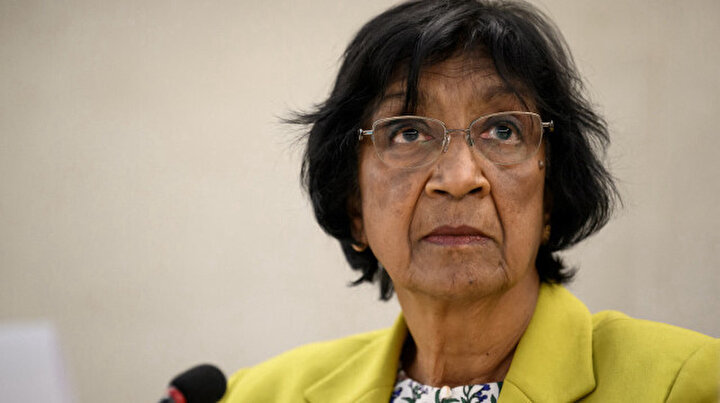
The last story to tell is close to my heart because it is about my Mum, Mrs. Veeramal Moodley, popularly known as Dhanum Moodley (23rd January 1923-26 July 1985). She was a Thamizh school principal and teacher (from the 1940s) in the Coronation Krishna Sentamizh Padasalai and a Member of the Briardene Welfare Organization.
Despite caring for her sick husband, she made home visits to encourage parents to educate their daughters so that they could get careers to equip them, to be self-sufficient in life. As a member of the Welfare Organization, she got the birth certificates from the Immigration Office in Durban to enable children and even some teenagers, to attend English Schools in Briardene in the K.K.Pillay Government Aided School (a school built by Indians but aided by the Government) and Umgeni Government School.
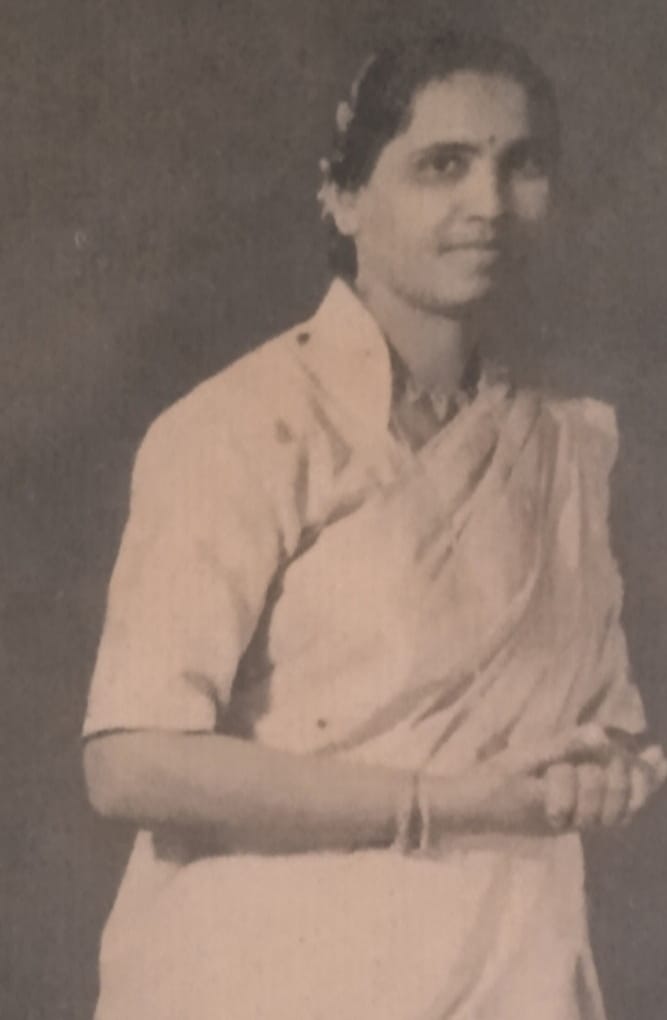
She contributed immensely to the advancement of the Tamil language and culture. She encouraged me to sing in a band, ‘Kalaivanar Musical Entertainers’ from a very young age.
Two years before I got married, I sang in Rangeni Orchestra. She taught us all to sing songs in the Tamil School. We had to memorise the first and last verses of the Thevarum, Thiruvasagam and Thirupugazh so that we could sing with others if we attended any prayer, funeral service or religious ceremonies. If there were no singers, whoever was present there could all join in and sing songs that we learnt in Thamizh School. She also taught us to dance to film songs, eg, from the Movie Penn.

She raised Funds, by producing dramas. In 1950 she produced “Kusa Lava” in the Durban City Hall.
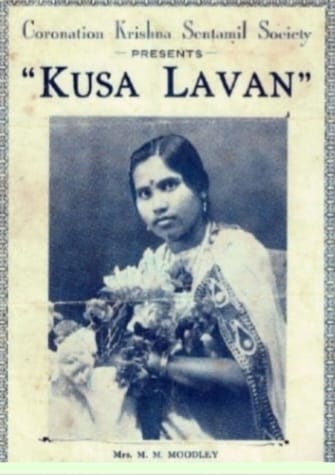
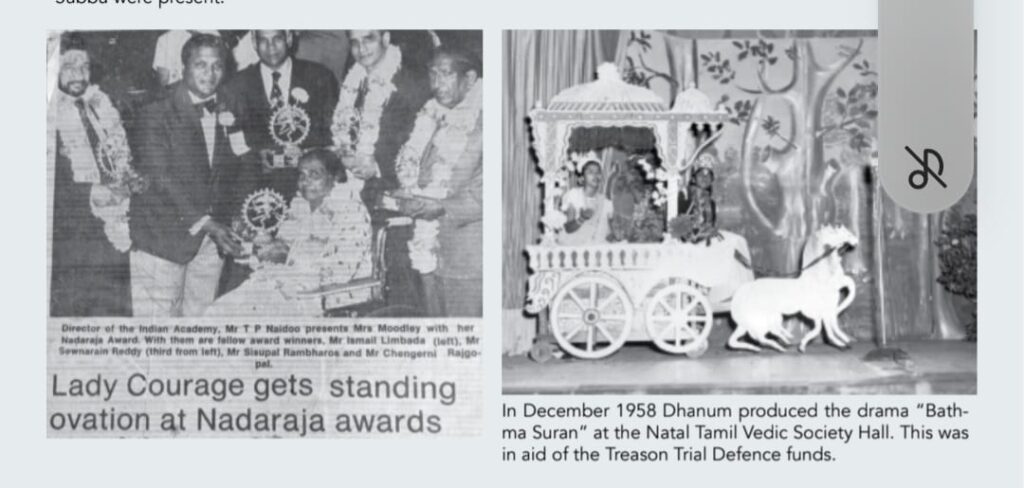
Bathma Suran was produced In 1958. This was in Aid of the TREASON TRIAL DEFENCE FUNDS. These were the funds that helped people who were jailed for fighting against the apartheid regime.
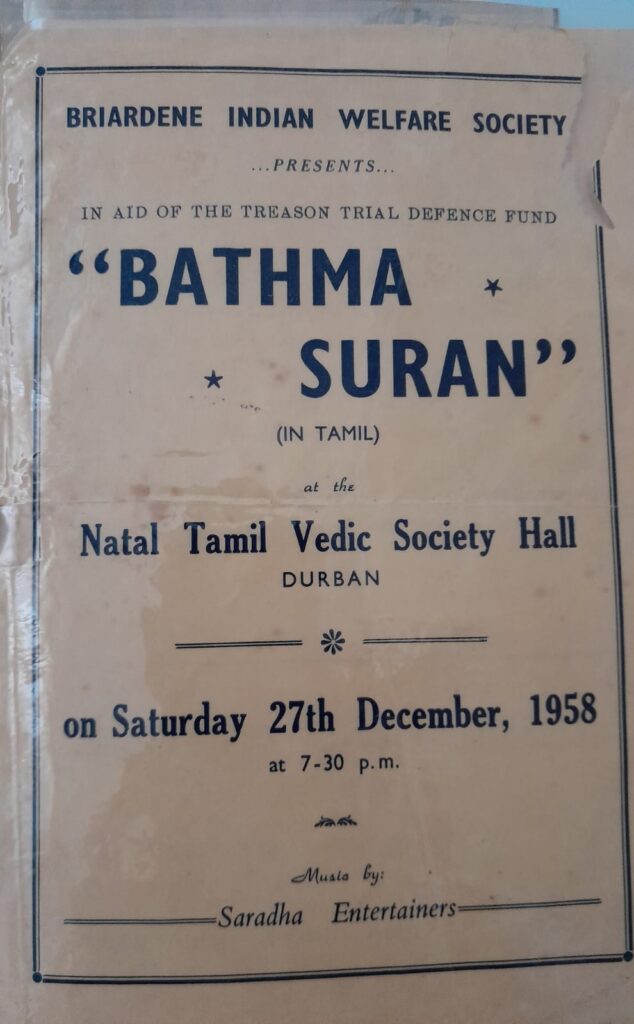
The above picture is of the big group of students that took part in the drama, of the Briardene Indian Welfare Society. Even if a child just fanned the king, she would include them in the photo, to encourage them to have the courage to take part in later shows. I’m the second child from the right-hand side sitting on the floor. I was ten years old and took part as Mogini.
It is because of her guidance that I was inspired to become a teacher, work in education, plus the promotion of our culture. This was especially important to her as my dad had become bedridden in 1951 and passed away ten years later, making her essentially a single parent of four children. Despite this, she was passionate about Thamizh culture. Despite a lack of High School education, she excelled in the business world and even became the First Woman to be part owner of a Tamil music and book shop,” Padmini Music Centre,” in Victoria Street, Durban. This was also a meeting place for interested Thamizh scholars, lovers of Thamizh music and Thamizh Community to air their views, express ideas on any specific topics of interest and order Thamizh books they needed from Chennai /Madras.
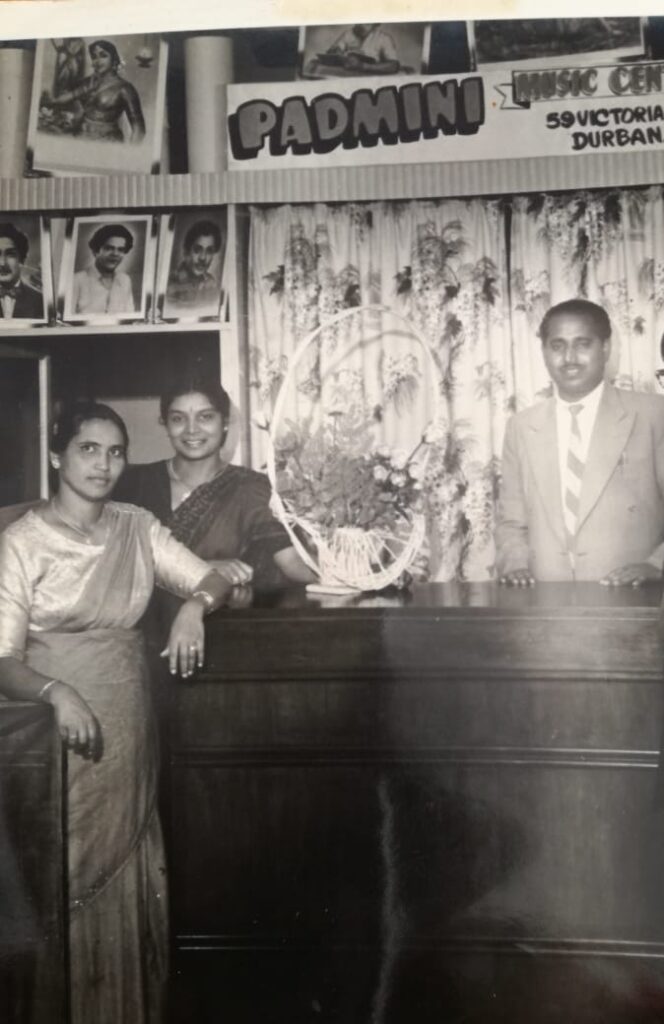
She also learned to play the Sithar, a rare instrument in South Africa.
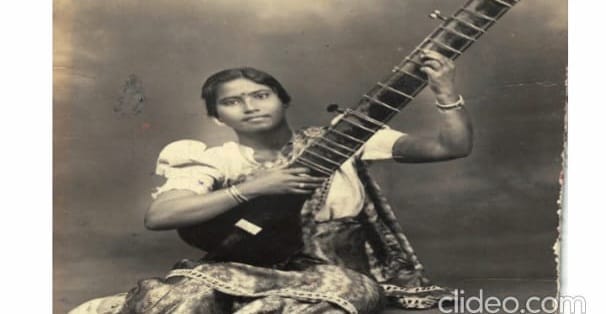
She was a renowned Tamil classical singer and took part in regular radio broadcasts. She was greatly involved in the Thamizh Eisteddfod movement both in the Tamil Vedic Society and the South African Tamil Federation, an organisation she served for many years. Her granddaughters also excelled in Bharatha Natayam.
Her daughter Sushiela, a retired school teacher conducted voluntary Tamizh classes in Cape Town. She also conducted dance classes for students who took part in Thamizh Puthandu celebrations in Cape Town and those that took part in South African Tamil Federation Eisteddfods. She has also recorded three CDs and in 2009 won the SATMA South African Traditional Music Award, for best Indian album.

There are lots of unsung heroes who paved the way for a better life for our future generation.
The story of my mother may seem inconsequential in light of the heroic actions of other women highlighted, but to me, is an important lesson. Whatever little you can offer others of your own time and a willingness to share, your passions can have an impact on individuals and a ripple effect on generations down the line. If not for her, I might not be a teacher, singer dancer or member of the CapeTown Tamil Federation who has had the pleasure and privilege to share these stories with you.
About the Author – Sushiela Govender, Cape Town

Born in Durban, SA into a Tamizh family and settled there a couple of generations back, Sushiela Govender won Best Indian Album at the South African Traditional Music Awards (Satma) held in Durban in 2009. Formerly of Malvern and now living in Cape Town, she is a retired school teacher with more than five decades of experience in the music industry. She has released the devotional CD Dharshan, A Prayer for All and another CD Anbumalai, which was released in 2003.



